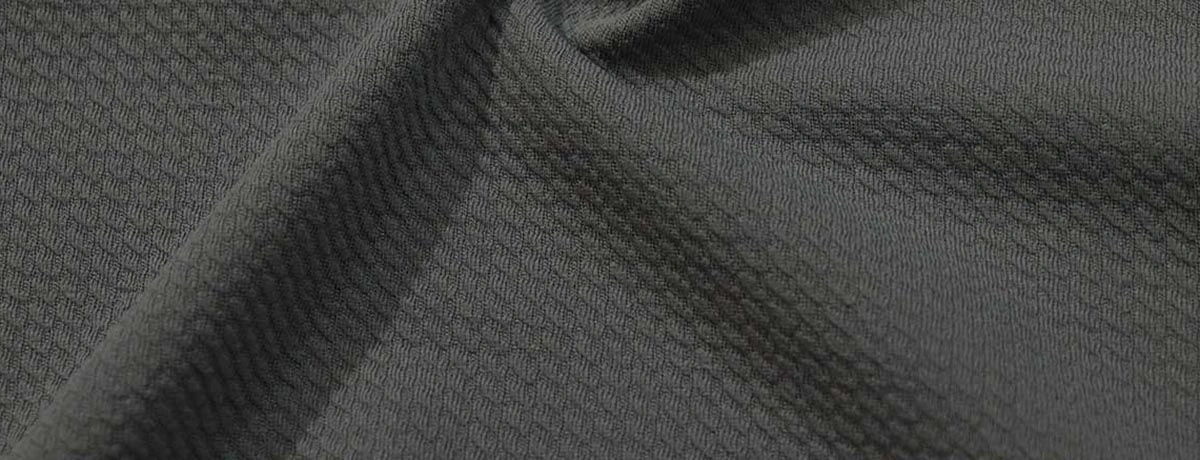Texture Knit Fabric in the Textile World

Soft textured knit fabric is a new kid on the block in the textile world and offers a mix of looks, performance and versatility. Whether you are in garment, home textiles or technical textiles, soft textured knit fabric has properties that meet many market needs. This blog will delve into all aspects of this fabric from its history to its future to help you understand its applications and benefits.
What is Textured Knit Fabric
Definition and Properties
Textured knit fabric refers to textile materials created by knitting techniques that introduce surface features such as patterns, raised designs or ribbing. These textures add visual appeal and performance like stretch, breathability and moisture wicking. The luxurious texture and drapability, often described as a 'soft hand,' make textured knit fabric suitable for fashion to technical applications.
History
The history of textured knit fabrics can be traced back to the innovations in knitting technologies in the mid 20th century. Originally used in high fashion apparel, with the introduction of spandex and synthetic fibers the fabrics became more elastic and durable. Over time the use of textured knit fabric expanded to home and technical textiles due to its functionality and design possibilities.
Applications and Uses in Various Industries
Fashion and Apparel: Sweaters
Fashion is all about innovation and looks and textured knit fabric delivers on both. Chic dresses made from this fabric combine sophistication with comfort, making them perfect for various relaxed settings. The stretch fabric texture provides comfort while maintaining the form, making it ideal for creating stylish and comfortable dresses. Additionally, its versatility makes it suitable for fitted garments, such as tailored tops and layering basics. This makes it a favorite for casual wear, winter collections and activewear. For example a leading fashion designer used textured knit fabric in a winter collection and saw sales increase by 25% as customers loved the warmth and style.
Home Textiles
Home textile manufacturers use textured knit fabrics for premium bedding, cushion covers and upholstery. The fabric’s light texture provides a sensory experience that adds to the comfort. For example a home textile brand launched a bedding line with textured knit fabrics and saw 30% higher average selling price than their plain weave products.
Technical Textiles
Textured knit fabrics are also used in technical textiles. Sports apparel brands have adopted them for activewear, utilizing the moisture wicking and stretch properties. A well known sports brand used textured jersey fabric in their activewear range and saw 20% growth in their segment due to comfort and performance features.
Manufacturing Process of Textured Knit Fabric
Knitting Process
The creation of textured knit fabric involves advanced knitting techniques that produces loops of yarn which gives it the elasticity and texture. Circular and flat knitting machines are used, to achieve various structural patterns.
Texturing Techniques
Texturing processes like air-jet texturing, false-twist texturing and crimping are used to introduce the unique properties of textured knit fabric. For example air-jet texturing injects small loops into the yarn surface and makes it softer, crimping adds more stretch.
Advantages and Disadvantages
Advantages
Durability and Comfort: With its stretchy structure, textured knit fabric offers both resilience and softness and is suitable for garments and home products. Cotton blends, known for their comfort and versatility, are often used to create durable and functional garments.
Versatility in Design: The fabric’s various textures and patterns allow manufacturers to create products that are both visually appealing and functional.
Moisture Management: Its breathability and moisture-wicking properties make it perfect for sports and activewear.
Disadvantages
-
Cost: High quality textured knit fabric can be more expensive than other materials especially if advanced texturing techniques are used.
-
Environmental Impact: Many texturing processes use synthetic fibers which may not be sustainable unless recycled materials are used.
Market Trends and Future Outlook
Recent Developments
Textured knit fabric is seeing more innovations with the use of recycled fibers and performance enhancing technologies. Innovative patterns, such as a gold grunge pattern on black fabric, add an edgy yet luxurious appeal to various clothing items like leggings, tops, and dresses. Smart textiles that can monitor health metrics are also being explored with textured materials.
Sustainable Texturing Practices
Sustainable practices like using eco-friendly dyes and recycled fibers are becoming the industry standard. The use of vibrant and colorful knit fabrics, including shades like yellow, enhances the aesthetic appeal and versatility of sustainable fashion. One sustainable fashion brand saw 40% increase in brand loyalty after switching to eco-friendly textured knit fabric exclusively.
Buying Guide for Textured Knit Fabric
Considerations
When buying textured knit fabric:
-
Material Composition: Check the fiber blend for durability and functionality.
-
Texture and Pattern: Ensure it matches your design and purpose.
-
Supplier: Choose suppliers with good reputation for quality and sustainability.
-
Vibrant Patterns: Consider fabrics with vibrant pink patterns and designs, which are appealing for various apparel like dresses, leggings, and skirts.
Where to Buy Textured Knit Fabric
Leading textile manufacturers and wholesalers offer textured knit fabrics. Make sure the supplier follows ethical and sustainable production practices.
Why Textured Knit Fabric Matters
Textured knit fabric is a game changer in textile innovation, it offers practical benefits and design flexibility. The versatility and warmth of this fabric make it ideal for creating cozy sweaters, cardigans, and layering pieces. From fashion to home textiles and technical applications it’s a must have for manufacturers.
For more information on how to use textured knit fabric in your products or to find good suppliers, contact our team of experts today.
